In today’s rapidly evolving business world, Software as a Service (SaaS) continues to gain popularity. It has significantly changed the way organizations access and utilize software applications. Compared with traditional software, SaaS offers numerous advantages, such as flexibility and scalability.
Statista predicts that by 2027 SaaS global market volume will reach US$344bn.
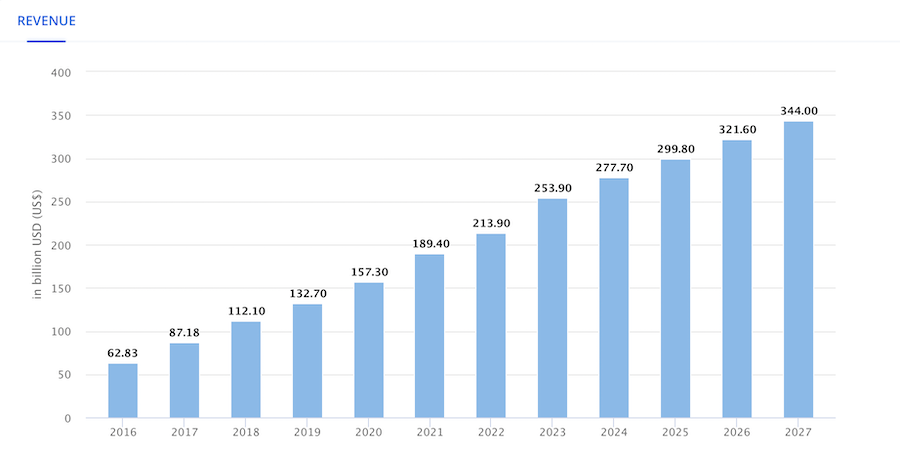
The demand for Software as a Service keeps growing, so we will probably see more and more organizations developing SaaS products. To make their solutions safe, companies should prioritize robust security measures.
In today’s blog post we will discuss:
- The Importance of SaaS Security
- SaaS Security Challenges
- The Ways to Deal with Security Risks
- SaaS Security Trends
Now, let’s dive in.
The Role of SaaS Security
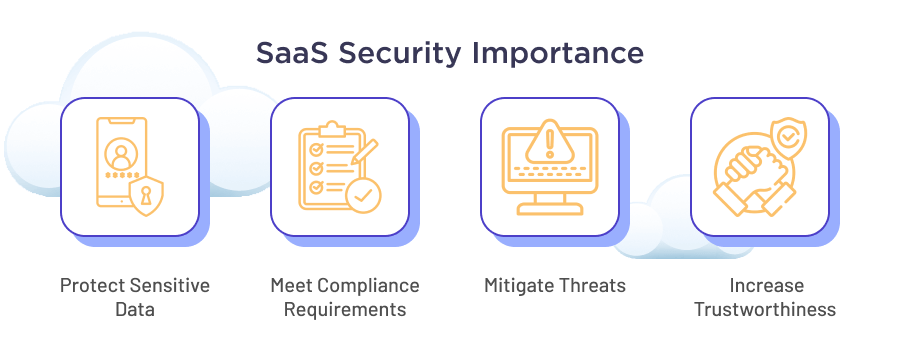
Before discussing the main challenges in SaaS security, let’s first talk about its essence and understand why it is important.
SaaS security refers to the comprehensive set of policies, standards, technologies, and protocols used to protect user data, apps, and infrastructure within the SaaS environment. Typically, it includes authentication, access controls, network safety, data backup, recovery, and more, that we’ll talk about further.
Here are some key reasons to keep your SaaS platform secure:
Protecting Sensitive Data. SaaS apps often store and process private information, and robust security practices help safeguard it from unauthorized access or other cyber attacks.
Meeting Compliance Requirements. Many industries have special data protection and privacy standards. Implementing strong safety features help stay compliant with these requirements.
Mitigating Threats. In order to detect and mitigate potential threats and vulnerabilities, SaaS security solutions encompass various measures such as encryption, multi-factor authentication, and intrusion detection systems.
Increasing Trustworthiness. When customers pass their data to a SaaS provider, they expect their sensitive information to be tightly protected. And strong Software as a Service safety features enhance trustworthiness.
Common SaaS Security Risks
Having established why it’s so important to keep your SaaS product secure, let’s move to the core risk areas you need to consider for your applications and talk about the most common security issues you can face.
1. Access Management
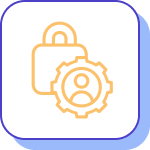
Though SaaS applications usually require login and authentication, managing access still remains challenging.
With the right access management in place, you can minimize insider threats and protect your SaaS environment. For example, you can implement role-based access control to users. In this case, they will be granted permissions only to necessary data required to perform their job functions and responsibilities.
Third-party rights should also be delegated appropriately. They should be strictly defined and aligned with the provided services. It will help prevent partners from misusing their access, minimize data breaches, etc.
2. Data Privacy and Recovery
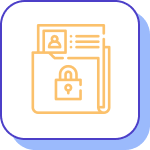
While SaaS provides convenience and flexibility, it also raises concerns regarding customer data privacy and the ability to effectively recover data.
To address these kinds of threats, you can implement strong encryption techniques. It will allow you to protect data both in transit and at rest. Encryption ensures that information stays incoherent and unusable even if stolen by unauthorized parties.
Another potential vulnerability here is data loss. It can occur for different reasons such as human error, software bugs, or cyber attacks. So, it is important to have comprehensive backup mechanisms in place. For example, you can leverage point-in-time recovery capabilities to restore data to specific time snapshots.
3. Third-Party Integration
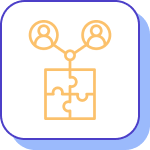
SaaS products can be integrated with third-party apps such as payment gateways, marketing or business intelligence platforms. While they can provide additional features, it is important to take into consideration potential risks such as data breaches and unauthorized access, or lack of standardization in APIs.
Learn more about the Fundamentals of Payment Gateways Integration
To mitigate security concerns associated with third-party integration, consider checking if the vendor has relevant standards, certifications, and secure APIs. Ideally, you should gain a clear understanding of their data protection measures during the integration process. Additionally, you can limit their access to necessary data and functionalities to minimize potential vulnerabilities.
4. Data Storage
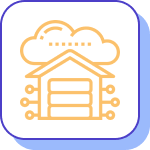
As we have already mentioned, SaaS applications handle sensitive user data, so you have to focus on the security of your data storage to eliminate the risk of data loss.
Generally, there are two ways to store data. You can choose cloud environments such as Amazon Web Server, Google Cloud, or Microsoft Azure. These cloud service providers offer secure, scalable, and versatile storage solutions as well as compliance certifications. However, in this case, you share control of safeguards and infrastructure with a third party.
Read how to build an Effective Cloud Data Management Strategy
Another option you can go for is a private data center with on-premises infrastructure. It provides you with complete control over the safety of data and storage. Yet, private data centers usually require more investment and an IT team to manage and maintain the environment.
Whatever storage you will choose, on-premises or cloud, ensure that security measures, like data encryption, access control, and others are implemented throughout the entire cycle of data management for your SaaS solution.
5. Access from Anywhere
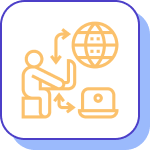
Today it is possible to access SaaS platforms from anywhere, even on the go. The latter became possible thanks to the adoption of mobile solutions. The only thing required is a stable connection that can be quickly established through wireless technologies.
Here, we’d like to focus on the use of public Wi-Fi. They often can cause security issues and become a problem of data leaks, so it’s better to avoid using them when accessing sensitive information. Hackers can use such networks to compromise data, potentially resulting in breaches and unauthorized access.
To minimize these issues and keep your SaaS safe, encourage your clients or employees not to use public Wi-Fi to access or share private data like financial or personal information. Instead, you can advise them using a Virtual Private Network (VPN) to encrypt and protect your data from unauthorized access.
SaaS Security Best Practices
We have discussed the security concerns of SaaS platforms, so now let’s look at the best practices and industry standards to tackle them effectively.
1. Ongoing Compliance Monitoring
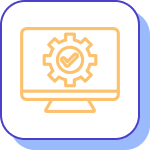
One of the popular approaches to protect SaaS solutions is compliance monitoring. Industries often require relevant regulations and standards for data storage and protection.
For example, if you operate in the healthcare industry, it is crucial to stay aligned with the U.S. Health Insurance Portability and Accountability Act (HIPAA) to safeguard patient sensitive data.
Learn more about HIPAA-Compliant App Development
Another example is the FinTech industry. In this case, you need to comply with Know Your Customer (KYC) and Anti-Money Laundering (AML) regulations. They aim to prevent fraud, money laundering, and other financial crimes.
By adhering to industry-specific regulations, you can enhance the overall protection of your operations and ensure the confidentiality of sensitive information, preventing unauthorized access or misuse. Additionally, it will help to avoid severe consequences like fines and other penalties.
At the same time, besides regulatory requirements, organizations often have their own internal rules and standards. Through consistent compliance monitoring, businesses can effectively enforce strong security practices across the entire company. As a result, they can reduce potential internal breaches and create a safe environment for sensitive data.
2. Enhanced Authentication
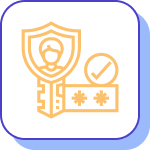
When it comes to login protection, it goes beyond traditional username and password authentication methods. In order to reduce SaaS safety issues, it’s advisable to use strong passwords and avoid short ones that contain personal information. Additionally, refrain from reusing credentials across multiple platforms.
As for authentication, it’s better to avoid single-factor authentication as it can be vulnerable. Typically, you can use a one-time password, biometric authentication, or some security questions, etc. In this case, users are asked to provide additional information, such as a code from a mobile app, fingerprint scan, or facial recognition.
Learn how Velvetech helped an executive search firm Secure Customer Data with Username and Password Authentication
3. SaaS Security Posture Management
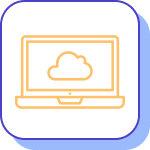
SaaS Security Posture Management, or simply SSPM, is an automated security approach designed to monitor and address risks within SaaS applications. By utilizing SSPM, organizations may efficiently handle issues like misconfigurations, excessive user permissions, compliance risks, and more.
You can even go a step further and set up systems that instantly lock user accounts after a certain amount of unsuccessful login attempts.
These methods significantly protect the login process and detect suspicious activities within SaaS apps. On top of that, this approach enables companies to proactively address any vulnerabilities and maintain a robust safety record.
4. OWASP Security Approach

Open Web Application Security Project (OWASP) is a valuable resource that provides guidelines and best practices to identify and mitigate potential risks to keep your SaaS platform secure.
OWASP can be used as a reference that not only highlights existing threats but also suggests potential solutions. In this regard, it becomes an invaluable asset for comprehensive testing and identifying safety risks. By leveraging it, you can actively contribute to creating a safer SaaS environment.
Emerging Trends and Technologies in SaaS Security
Finally, let’s discuss current trends and technologies that are definitely worth including in your SaaS security strategy.
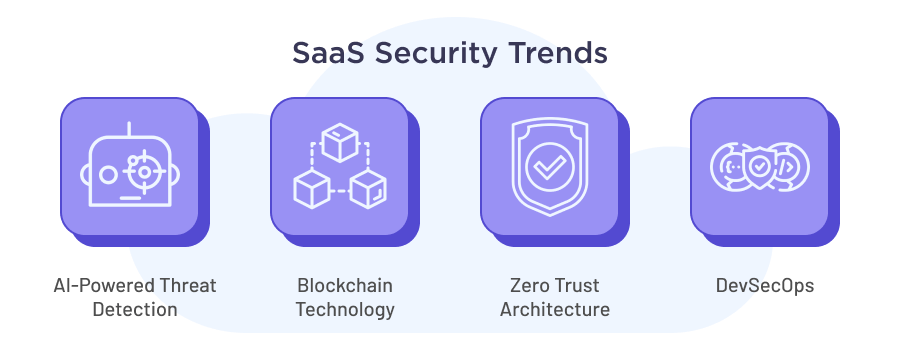
1. AI-Powered Threat Detection
First in our list is Artificial Intelligence. It’s used to build solutions that truly cater to detect and mitigate threats, and SaaS environments are no exception.
AI algorithms can analyze vast amounts of data, user behavior, system logs, and the like to detect threats and malicious activities at an early stage. Moreover, AI can provide automated responses and instantly react to security incidents by blocking suspicious activities. On top of that, you can integrate AI-powered threat detection with security orchestration and automation tools that offer multiple benefits.
Overall, AI-powered threat detection is transforming the safety of SaaS systems by making it possible to identify potential risks faster and more efficiently.
Learn about the Role of Artificial Intelligence in Business
2. Blockchain Technology
When focusing on the security of your SaaS solution, it is worth knowing the advantages of blockchain technologies.
Blockchain offers a decentralized and self-sovereign identity management. This leads to better privacy by minimizing the risk of identity theft and unauthorized access to personal information. On top of that, thanks to decentralization, data is being hosted across a network, rather than just on a single server, which can mitigate DDoS attacks.
For example, if we take payment processing, blockchain-based tokens can offer a valuable opportunity to enhance its security. Compared with traditional payment methods, tokens can represent digital currencies leading to secure transactions.
Read how we helped create a Blockchain-Based Intrusion Detection System for Cybersecurity Healthcare Startup
3. Zero Trust Architecture
One of the recent approaches of SaaS security that is becoming a trend is Zero Trust Architecture (ZTA). As the name implies, ZTA operates under the principle of “never trust, always verify”. Simply put, none of the users or devices, including those connected to the corporate network, are completely trustworthy.
One of the main benefits of ZTA is continuous authentication and authorization. They are permanently required during the user’s session. Besides re-authentication, it also monitors user behavior to detect suspicious activities.
Generally, ZTA grants users the minimum level of access to specific resources they need. As a result, it can reduce potential damage in case of a breach.
4. DevSecOps
The final trend we want to cover is DevSecOps. It incorporates robust techniques into the DevOps process.
In short, DevSecOps strives to foster collaboration and communication among development, operations, and security teams right from the beginning of software development. By considering potential attacks and vulnerabilities early on, developers can successfully tackle them through the implementation of security controls and mitigations.
Additionally, DevSecOps uses automated testing and code analysis tools, which help detect weakness, coding errors, and other threats.
Learn more about DevOps Methodology in Software Development
Ensure the Security of Your SaaS Product
Now you know the top SaaS security risks and best practices to tackle them effectively. However, it may still remain challenging to choose the right approach and define the technologies that fit your particular situation.
Well, our team of seasoned professionals are here to assist you in implementing successful SaaS solutions with the focus on both their security and efficiency. Don’t hesitate to reach out to us.









